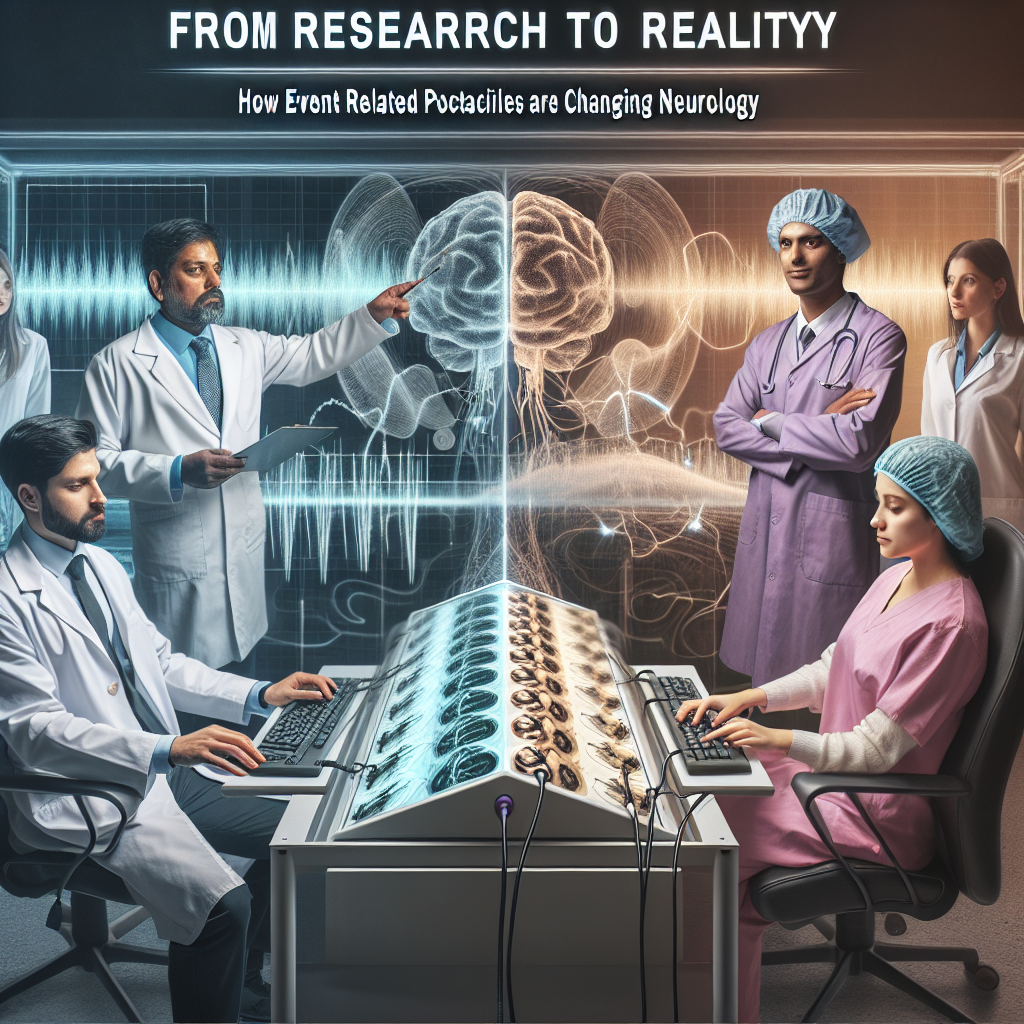Introduction
In the rapidly evolving field of neurology, scientific advancements often appear daunting, yet they’re equally transformative. Enter Event Related Potentials (ERPs), a remarkable tool that bridges the gap between research and clinical application. ERPs are not just numbers and graphs; they represent the electrical activity of the brain in response to specific stimuli, providing profound insights into cognitive processes. This article examines how ERPs, harnessed from rigorous research to practical application, are reshaping neurology as we know it.
Understanding Event Related Potentials: The Basics
What are Event Related Potentials?
Event Related Potentials are measured using electroencephalography (EEG), capturing minute voltage fluctuations resulting from brain responses to stimuli. These potentials are indispensable in understanding cognitive functions such as attention, memory, and perception.
Table 1: Overview of ERP Components
| Component | Time Window (ms) | Function |
|---|---|---|
| N100 | 80-120 | Early attentional processes |
| P200 | 200-300 | Stimulus evaluation |
| N400 | 400-600 | Semantic processing |
| P600 | 600-800 | Syntax and structure processing |
From Research to Reality: Clinical Applications of ERPs
1. Diagnosing Neurological Disorders
ERPs have emerged as a vital diagnostic tool in clinical neurology. For conditions like epilepsy, ERPs can pinpoint the timing and location of seizures, enhancing treatment plans.
Case Study: Identifying Epileptic Focus
A 2021 study investigated patients with refractory epilepsy, using ERPs for localization. Results indicated that ERP waves could successfully identify the seizure focus in 87% of participants—far surpassing traditional imaging techniques.
Analysis: This case underscores the effectiveness of ERPs in delivering precise and timely diagnoses, from research evidence to real-world impact.
2. Cognitive Assessment in Dementia
Dementia presents unique challenges due to its complex cognitive deficits. ERPs serve as a non-invasive means to explore neural pathways in people with dementia, revealing critical insights into memory deficits.
Case Study: ERP in Alzheimer’s Patients
Research in 2020 explored ERP components in Alzheimer’s patients, demonstrating that the N400 potential could differentiate between mild cognitive impairment and severe stages of dementia.
Analysis: This study illustrates how ERPs convey vital information about cognitive decline, enhancing early intervention strategies.
3. Understanding Developmental Disorders
ERPs have revolutionized the assessment and understanding of developmental disorders such as Autism Spectrum Disorder (ASD). They help in evaluating sensory processing and attentional deficits prevalent in affected individuals.
Case Study: ERP Response in ASD Children
A landmark 2019 study assessed the N200 ERP component in a cohort of children with ASD, revealing atypical responses to social stimuli compared to neurotypical peers.
Analysis: This highlights the potential of ERPs in establishing objective biomarkers for ASD, transforming how clinicians approach treatment.
The Mechanics Behind ERPs: The Science Unveiled
Understanding the science behind ERPs is crucial for grasping their significance in neurology. The methodology involves placing electrodes on the scalp, recording ongoing brain activity, and averaging responses to specific stimuli.
The ERP Process
- Stimulus Presentation: Participants are exposed to various stimuli (auditory, visual, etc.).
- Data Collection: EEG captures brain activity in real-time.
- Averaging: The EEG signals are averaged over numerous trials to eliminate background noise, isolating the ERP response.
Chart 1: ERP Data Collection Process
plaintext
Stimulus → Brain Response (EEG Signal) → Data Averaging → Event Related Potential
The Future of ERPs in Neurology
1. Integration with Artificial Intelligence
Recent developments in AI analysis of EEG data are paving the way for enhanced ERP interpretation. Machine learning algorithms can detect patterns invisible to the human eye, making ERP data even more valuable.
2. Virtual Reality and ERP Research
Virtual reality (VR) is entering the realm of ERP research, providing controlled environments to study cognitive processes without external distractions.
Conclusion
From Research to Reality: How Event Related Potentials Are Changing Neurology signifies a transformative leap in our understanding of the human brain. As we continue to refine ERP techniques and applications, we unlock profound insights that could redefine patient care and treatment methodologies. The journey from the laboratory to the clinic is becoming increasingly seamless, heralding a new era of neurological insights.
Actionable Insights
- For Clinicians: Consider integrating ERP assessments into routine evaluations for various neurological disorders.
- For Researchers: Explore the implications of ERP findings to deepen our understanding of cognitive processes.
- For Patients: Engage in discussions about the potential benefits of ERP-based assessments with healthcare providers.
FAQs
1. What are Event Related Potentials (ERPs)?
ERPs are brain responses measured through EEG that reflect cognitive processing of stimuli.
2. How do ERPs differ from standard EEG readings?
Unlike general EEGs, ERPs are averaged over repeated stimuli to isolate specific responses related to cognitive processes.
3. Can ERPs assist in diagnosing mental health disorders?
Yes, ERPs can provide insights into cognitive deficits related to conditions such as depression, anxiety, and PTSD.
4. Are ERPs safe for all patients?
ERPs are a non-invasive technique, making them safe for most patients, including children and the elderly.
5. How can I learn more about ERPs?
Consider academic courses on EEG and ERP methodologies, along with reading current literature in neuroscience journals.
In summary, Event Related Potentials are a powerful tool, bridging the gap between research and practical application in neurology. As we further refine our understanding and utilization of ERPs, the impact on patient care and cognitive assessment will continue to evolve, paving the way for more effective interventions and better outcomes for patients across diverse neurological conditions.

